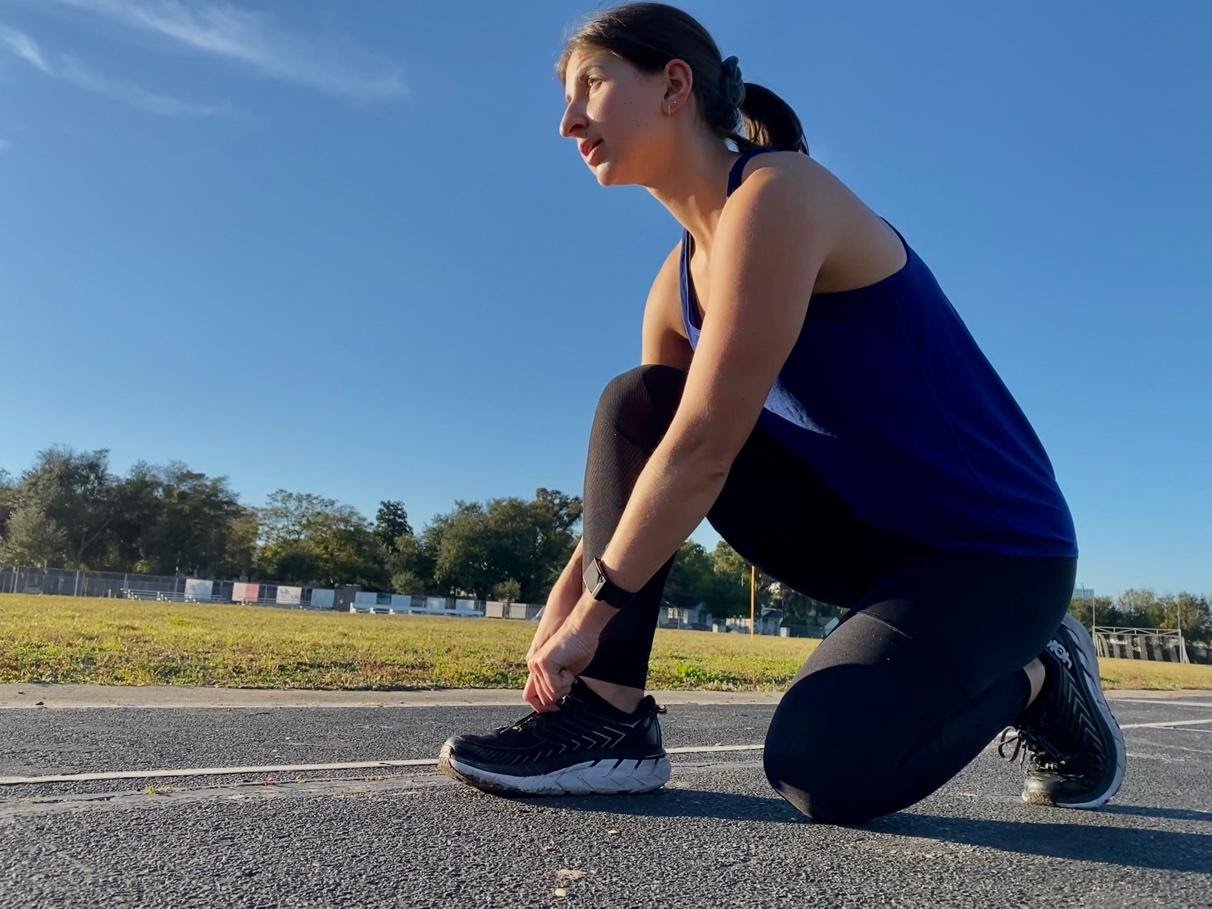


Running is one of the best and most common forms of exercises around the world as it offers a large variety of health benefits. However, there are a ton of running related injuries (RRI) that affect both competitive and recreational runners each year, limiting them from performing at their best potential. Studies show that there is a 25% injury rate in recreational runners training for a 4mile event1, a 20% injury rate in novice runners who follow the popular graded running 10% increase rule2, and an 85% injury rate in runners who train over the course of 1.5 years for a 15k run, a 25k run, or a marathon!3
A running related injury (RRI) can be defined as “any musculoskeletal pain of the lower limb or back causing a restriction of running for at least 1 day.”1 Running related injuries are extremely multi-factorial and can be due to a ton of different reasons! Unfortunately, many runners are often told by other healthcare providers they need to stop running and “just rest” whenever pain or injury occurs. You might completely rest and take out running for a few weeks or even months to see if the pain subsides. Once you try to start running again the pain begins all over again and it feels like a vicious cycle. Sound familiar? This is very common with runners who jump back into pre-injury training and expect it to immediately feel normal. Without a specific plan and the proper guidelines, returning to running after an injury can often be a frustrating task.
As performance physical therapists who specialize in the management of the endurance athlete, we help runners navigate the uncertainties of injuries in order to figure out the root cause of the issue and help get them running again pain free. At MOTION RX we utilize a 3-step process in order to ensure the athlete can not only return to running pain-free as soon as possible but also become a more resilient and better runner going forward.
Step 1: Put the Fire Out
On the initial evaluation, the runner goes through a full comprehensive assessment to understand what the root cause of the issue is, screen out serious pathology, and understand current aggravating factors for their unique injury. This includes a long conversation about their training history, current goals, other stressors that may impact your training. Things we typically look for that make a runner more susceptible to injury includes a sudden increase in total running mileage or increased intensity, underprepared muscles or joints, and or a joint or tissue mobility restriction that may be causing the increased running sensitivity. From there we work with the athlete to develop an individualized program to get rid of the pain through finding tolerable movement patterns, manipulate running intensity or form, remove direct current stressors to the injury site, and utilize other modalities to return you to back pre-injury status.
Step 2: Implement an Individualized Plan to Return to Run Pain Free
Depending on the runner’s unique presentation including injury, sensitivity, and current load tolerance, we develop an individualized return-to-run progression for each athlete. Based on the injury, there are specific parameters or tests we like to see a runner be able to complete before returning to running. These include demonstrating adequate unilateral leg, hip, and core strength, as well as specific plyometric training to ensure the injured area can handle repetitive loads experienced when running. For example, an athlete with an ankle injury being able to perform >25 SL heel raises @ 30BPM or perform 50 SL POGO hops pain free before attempting some form of return to run progression.
If the runner has completely fully stopped training and running due to an injury we like to begin with as little running as (30 seconds of work, 2 minutes of rest) x 5 rounds. Based on the athlete’s performance, the runner either continues to add time to the run interval or, if the runner’s injured area is still sensitive to running, they repeat this interval for a week or two until our guidelines are met. This should allow the runner to gage how their body is responding to increasing mileage, and helps ensure the body is prepared to increase total running miles back to the athlete’s desired training level.
Step 3: Empowering the Athlete with the Tools and Knowledge for Long Term Health & Performance
Once you return to running pain-free our job is not over yet! We educate our runners on proper load management, essential strength training techniques, and property recovery so that they can become a more knowledgeable and resilient runner in the future. When scheduling runs try to increase mileage at a proper rate in to allow the body time to adapt. A great way to do this is to utilize acute to chronic workload ratio to monitor and manage optimal loading. In addition, one can reduce risk of future injuries through cross-training with strength training and plyometrics to ensure your body can handle whatever challenge comes your way. Finally proper recovery is also key to increasing longevity. Two of the biggest under appreciated key factors for adequate recovery is optimal sleep and nutrition.
If you have been dealing with pain or injury that has prevented you from running at your best or running at all, it doesn’t have to be like that! We can make an individualized performance rehab plan unique for your running needs in order to help you successfully return to those morning runs, joining that running group, or training for that race!
To learn more about MOTION RX Health & Performance, visit www.motionrxhealth.com
Sign up to receive our 3 Tip Thursday newsletter for weekly tips and articles on all things rehab, injury, and performance related HERE.
References:
https://pubmed.ncbi.nlm.nih.gov/18487252/
https://pubmed.ncbi.nlm.nih.gov/17940147/
https://pubmed.ncbi.nlm.nih.gov/2599739/